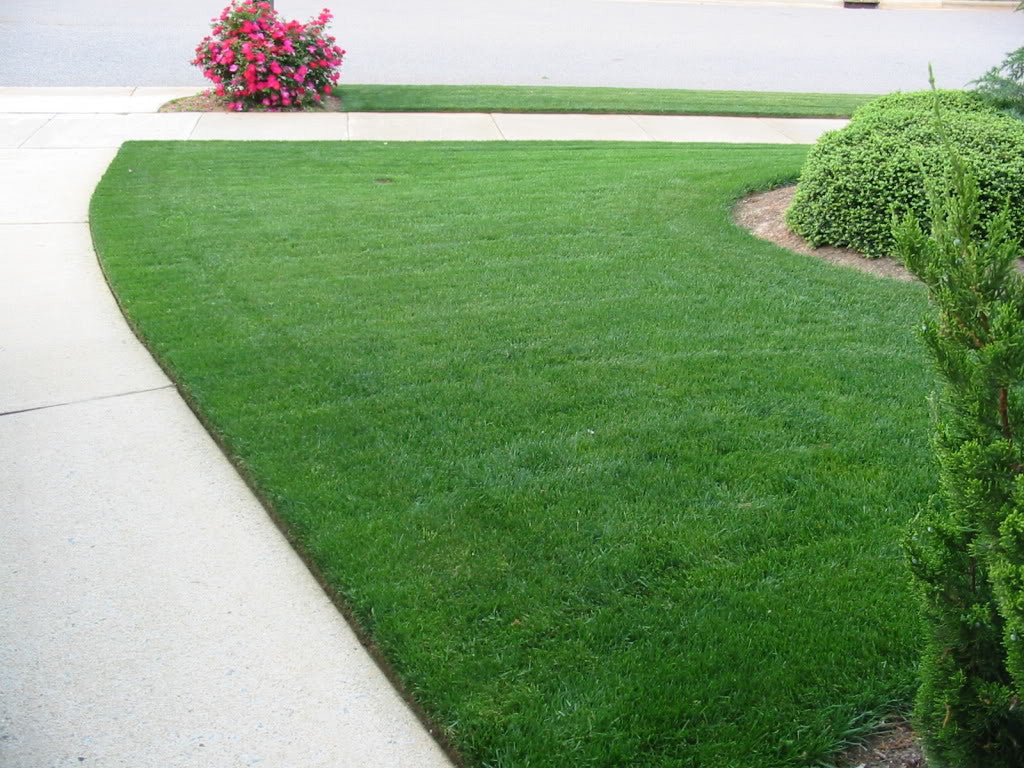

The summer months bring hotter weather, and along with it different care needs for your Kentucky Bluegrass. In warmer areas, it should receive a little more. Overseeding is the practice of adding seeds to existing turf to advance further growth and avoid patches in the lawn.ĭuring this time of year, you should aim to have a weekly watering schedule in place where your lawn gets at least an inch of water weekly. As a result, spring is an excellent time to seed, overseed, and fix any bare patches that have appeared in the lawn during the winter months. Lawn care at this time also includes weeding and adding products to avoid the reemergence of unsightly shoots.Īdditionally, the cooler weather promotes rapid germination with Kentucky Blue Grass. Solid preparation includes mowing it at a height of approximately 2 to 2.5 inches during the cooler months. The warmer days and cold nights promote grass growth. The first months after winter are ideal to start prepping and maintaining your lawn. Your watering schedule will change, depending on how hot and dry your area is. However, the precise schedule depends on the geographic conditions where you grow your Kentucky Bluegrass. Generally, the best time to work on this is between spring and fall. Once you are familiar with this identification and planting care plan, you should find it easier to maintain. To make things simpler, here is an overview of the care calendar for optimum results when growing Kentucky Bluegrass. Taking its maintenance requirements into account, Kentucky Bluegrass needs specific action at specific times of the year that other grass types may not require. Ultimately, your lawn will thrive provided you carefully research the right type and dosage of fertilizer for your needs. Fortunately, organic weedkillers are an option.Ĭhemical or organic is a choice for the individual gardener. In the same vein, there are specific products to prevent insect damage.īut there are homeowners who worry about adding chemicals to their lawn for fear that it will harm it. Thus, it makes sense to choose a good herbicide to avoid unattractive additions to your lawn. The persistent nature of weeds leads to them popping up where they shouldn’t. Once it starts growing though, it is a self-spreading grass.Īnother important product to consider adding to your Kentucky Bluegrass care plan is a reliable chemical weed remover. Some grow at three times the speed of Kentucky Bluegrass.

However, this process can be somewhat slower than other grasses. That means you can plant this grass from seed. One of the benefits of this grass is that it quickly germinates from the seed stage. Regular and robust irrigation promotes deep root growth and greater grass longevity. Nevertheless, determined homeowners in warmer states can achieve lush results despite the climate, if they keep a strong irrigation system in place. Kentucky Bluegrass thrives in areas where temperatures don’t go over 75F in July. This is another reason why it is not a wise choice for hotter, drier parts of the country. Unlike other grass species, this type has shallow roots. However, its robust nature means that this grass quickly bounces back once it receives appropriate irrigation. In fact, the grass will go dormant in extreme heat or drought conditions. Kentucky Bluegrass slows radically in hot weather. For this reason, this type of grass is a frequent choice for many homeowners in northern areas because it prefers mild summers and shrugs off cold winters. Moreover, out of the common lawn grasses, many consider Kentucky Bluegrass to have the best resistance to cold. Generally, it favors cool temperatures and thrives in more temperate conditions. This grass is a perennial variety, so it grows best in spring and fall, and its blades maintain their vitality over the years. Effects of local climate on Kentucky Bluegrass Moreover, due to the medium to fine texture of its blades, Kentucky Bluegrass lawns are also comfortable for bare feet and make it a common choice for home lawns. Part of the beauty of Kentucky Bluegrass is its color: These range from emerald to deep blue-green. Kentucky Bluegrass identification and planting is easy, once you know what to look for. Once brought stateside, it quickly made a name for itself as one of the premier lawn grasses nationwide. state, this grass actually originated in Europe and Asia. Although its name has associations with a U.S. Knowing all the key factors about Kentucky Bluegrass is fundamental to achieving the best results for your lawn.


 0 kommentar(er)
0 kommentar(er)
